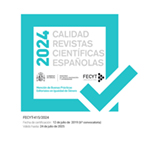Open Peer Review Vol.21 N.1
Thelma & Louise: Who gets to rage?
Dayna McLeod
Section: Videoessays
Reviewer A:
Please, comment on the most relevant aspects (positive points and areas to improve) of the reviewed videoessay.
This technically precise, impressive, and potently visceral video essay compels us to consider the imagined costs of rage as an act and reaction to escalating instances of patriarchal violence in the iconic film Thelma and Louise (1991). Since release, reviewers have often focused on its ending, the double suicide that so shocked audiences in theatres which was envisioned by screenwriter Callie Khouri and director Ridley Scott as the only path to freedom for two women on the run from the law. Scholarship has likewise fixated on this conclusion, often reading the film as a queer allegory that makes a vaginal metaphor of the Grand Canyon into which Thelma and Louise take a coded plunge as they run from the world of men. Here, the videographic critic addresses both rhetorical precedents while also subverting the dominant narrative that is so fixated on the ending of the film at the expense of the scripted events that precede it: namely, forms of structural, gendered violence that range from the individual body (i.e. rape, both attempted and, we assume, realized by the repeatedly referenced yet obfuscated trauma “in Texas”) to the state. Importantly, the essay refocuses our attention on the female protagonists to the extent that one “act” rejects the male figure who is only present through absence, thereby revealing the invisibility of patriarchy. Likewise, the essay reconsiders commercial film’s relationship to the female body to expose the underlying problem that posits female sexuality and physiology as a catastrophic endpoint: just what is so terrifying or upsetting about the vagina? In so doing, the piece hijacks the filmmakers’ produced acts and reactions of their protagonists and their journey toward cascading, normative moral panic to present an additional subject position with clearly expressed stakes: the acts and reactions of the videographic critic.
Would you suggest any changes or make any recommendations to improve the quality of the videoessay?
The video is outstanding and compelling as is, both as thought-provoking videographic criticism and as contribution to scholarly discourse. I offer the following feedback for consideration, but the author is free to take or leave the suggestions. -Raise the text of the title image such that it is above Susan Sarandon's sunglasses. -Do we need the rhetorical questions posed at the beginning of the essay? the video is provocative in terms of posing questions through the juxtaposition of image and sound without making those questions explicit through text (or priming a response). I suggest removing this text and, perhaps, move to the written commentary if needed. -Perhaps we don’t need the second title “I hate being called a beaver, don’t you?” It breaks up the rhythm and the powerful imagery to suddenly have two titles for the acts. -Perhaps the title of the piece itself is “I hate being called a beaver, don’t you?” -The piece doesn’t really need the epigraph text at the end, could be moved to the written commentary. The essay is so strong visually that it really can speak for itself. -The written commentary does need to be revised for style/formatting. -The film itself should be included in the references section of the written commentary. -If some of these suggestions are implemented by the author, the accompanying written piece will also need to be revised to reflect the changes (e.g. analysis of the title if it changes).
Reviewer B:
Please, comment on the most relevant aspects (positive points and areas to improve) of the reviewed videoessay.
No open comments
Would you suggest any changes or make any recommendations to improve the quality of the videoessay?
The video essay is certainly not without merit, but revisions are needed before the essay can be published, especially when it comes to the relation between the video essay and the written statement. Concerning the video essay itself, it does not clearly communicate its main points on its own, but seems reliant on the written statement. This is not necessarily an issue in itself (this applies to many academic video essays), but the relation between essay and written statement needs some more work. It is clear enough that the essay experiments with different techniques, but the techniques are not fully motivated. The written statement goes some way in explaining the effects of these techniques (most successfully in relation to cutting out the rapist from one of the scenes), but the tone is more often than not simply descriptive. It would be very useful to have the written statement actually motivate the different techniques (cutting out a character, reworking the sound, using multiple screens, mirroring the screen, superimposing labia lips at the end etc.) and to offer an in-depth reflection on what is achieved through the videographic mode and the chosen methods.
The videoessay included some modifications before publication












